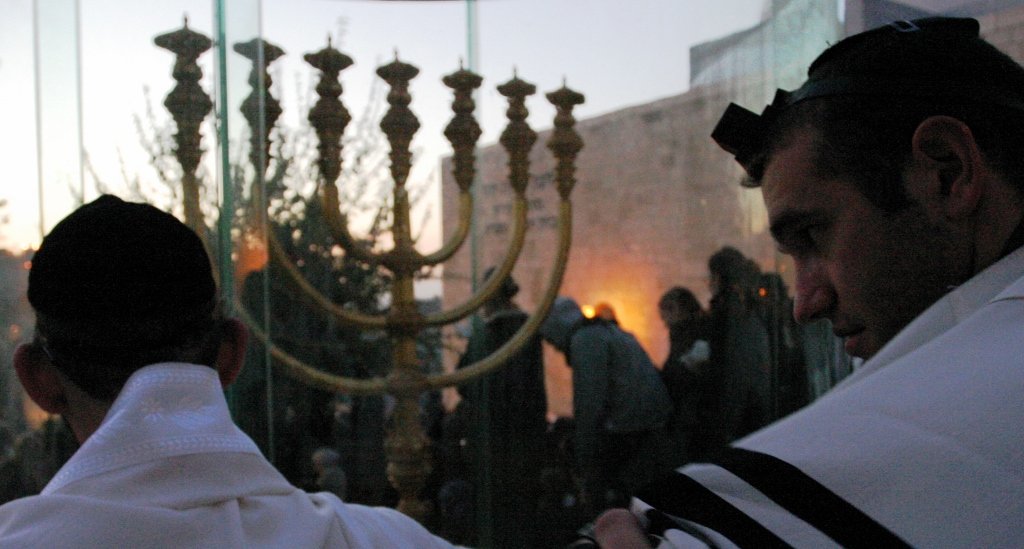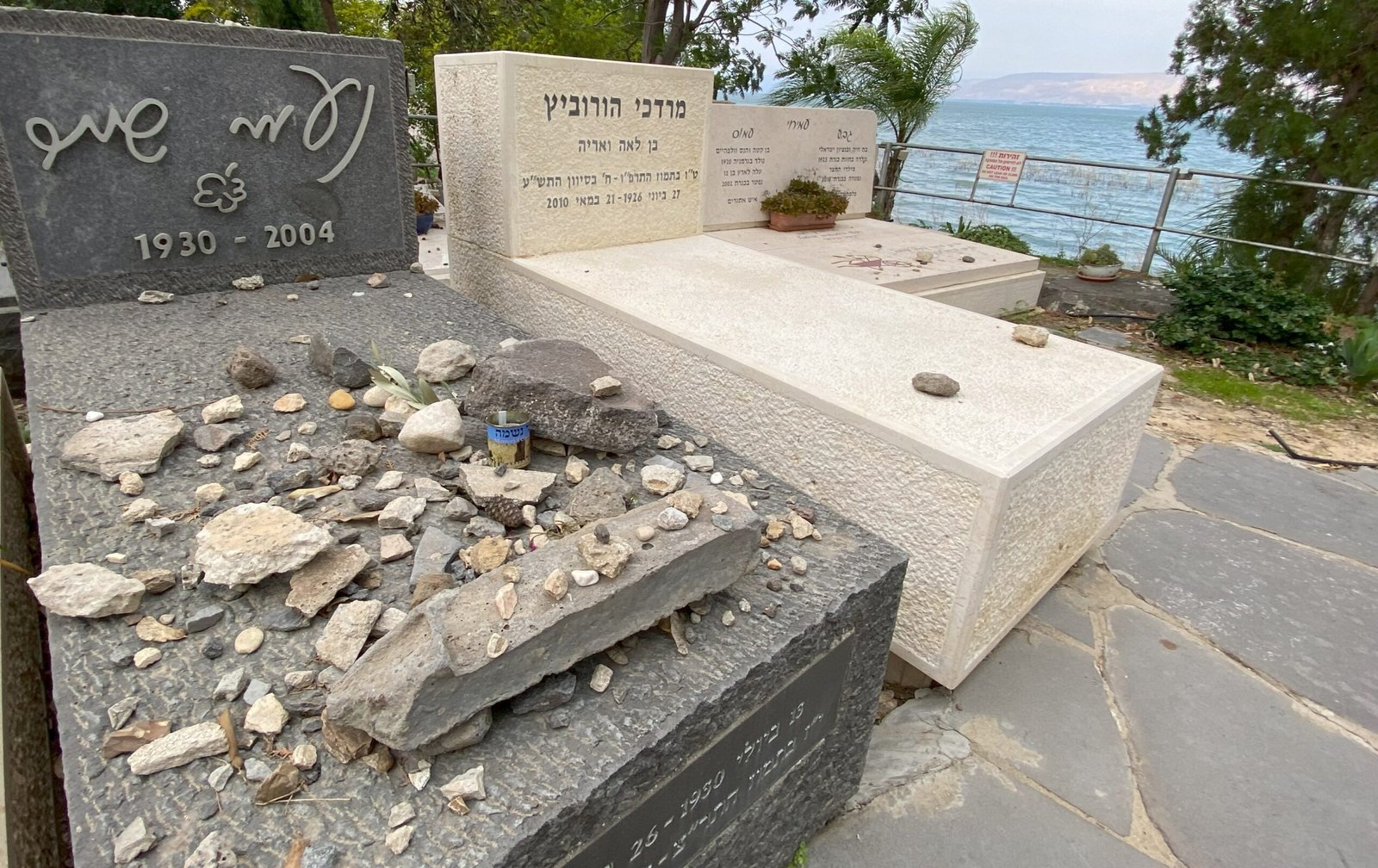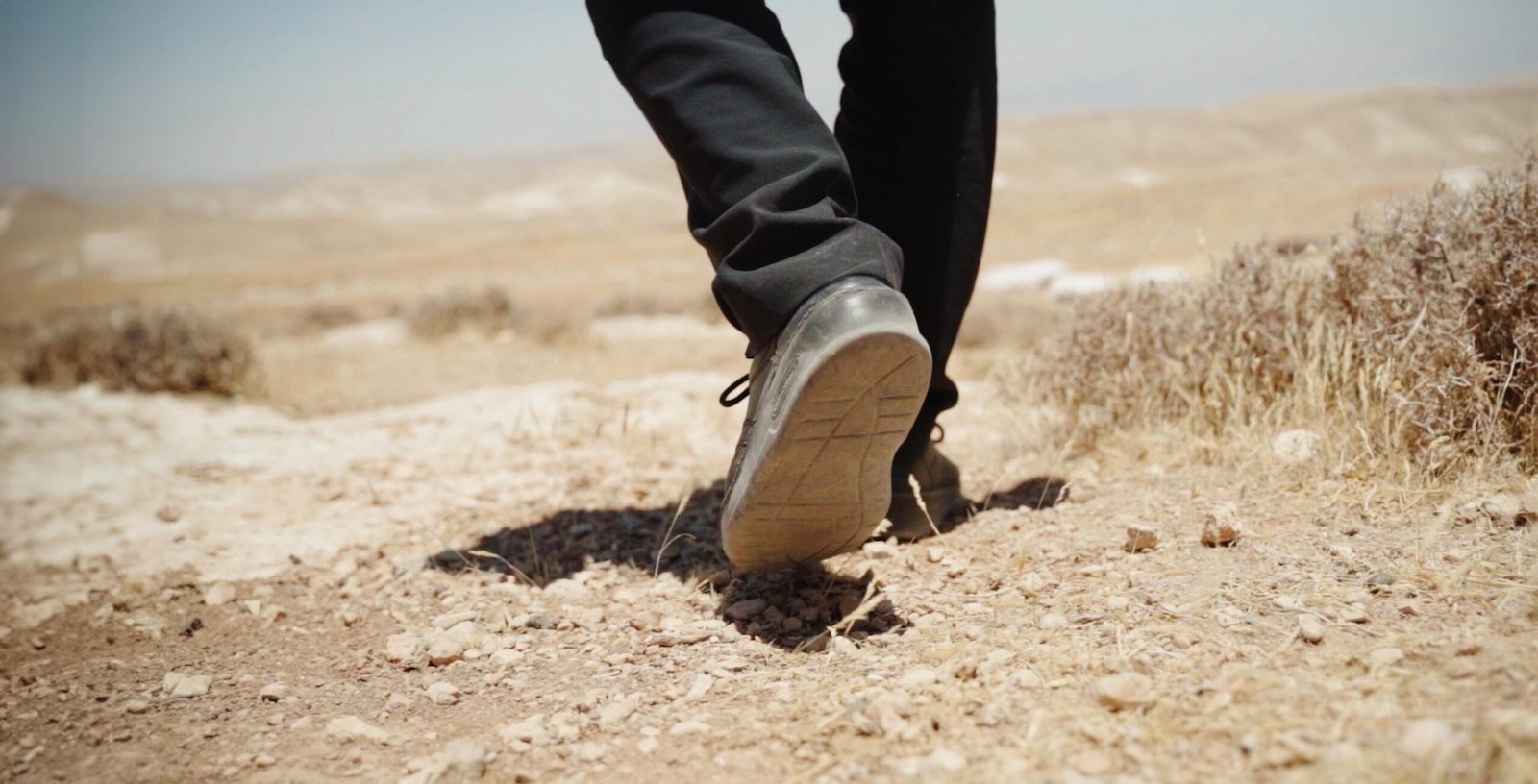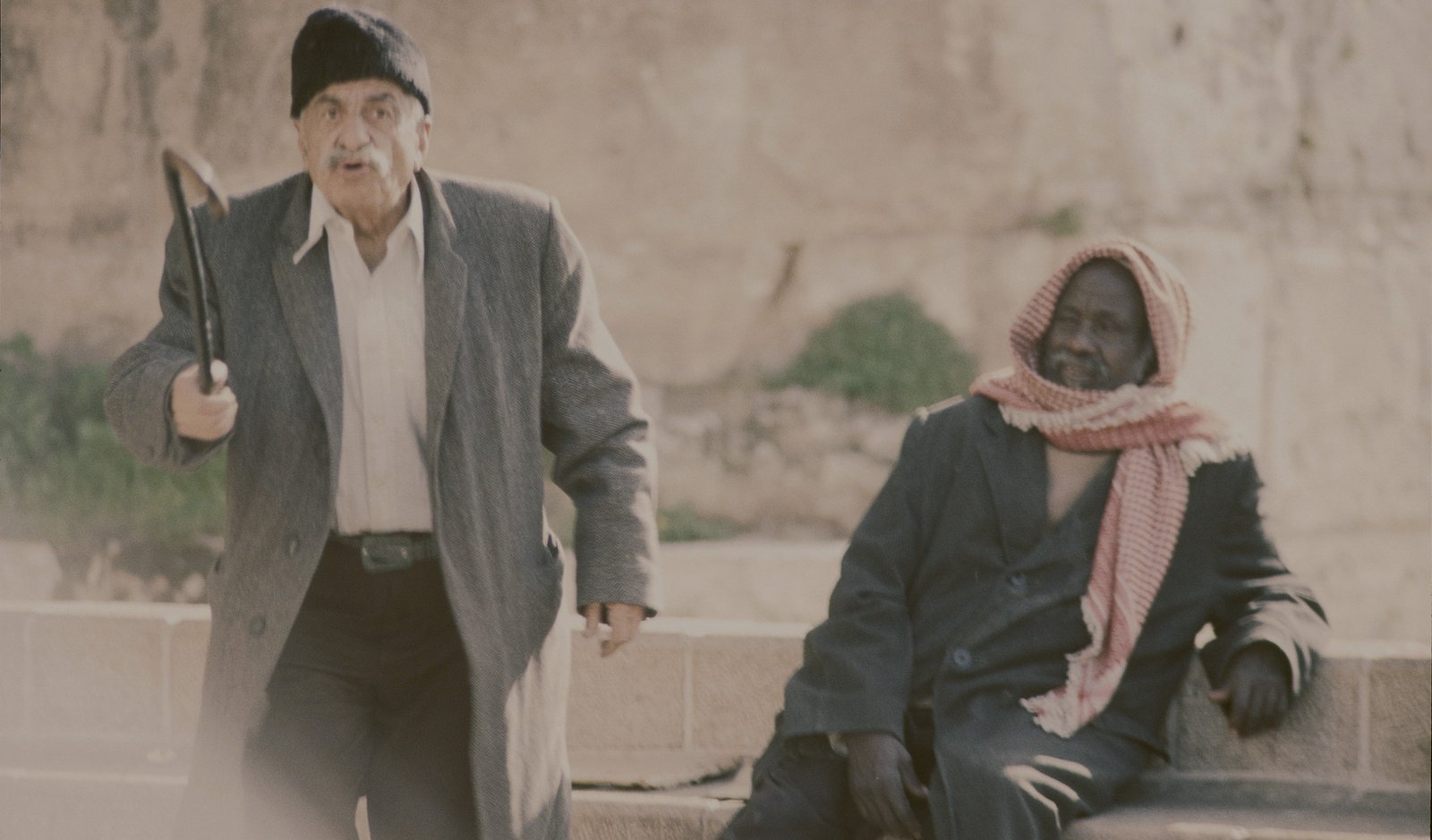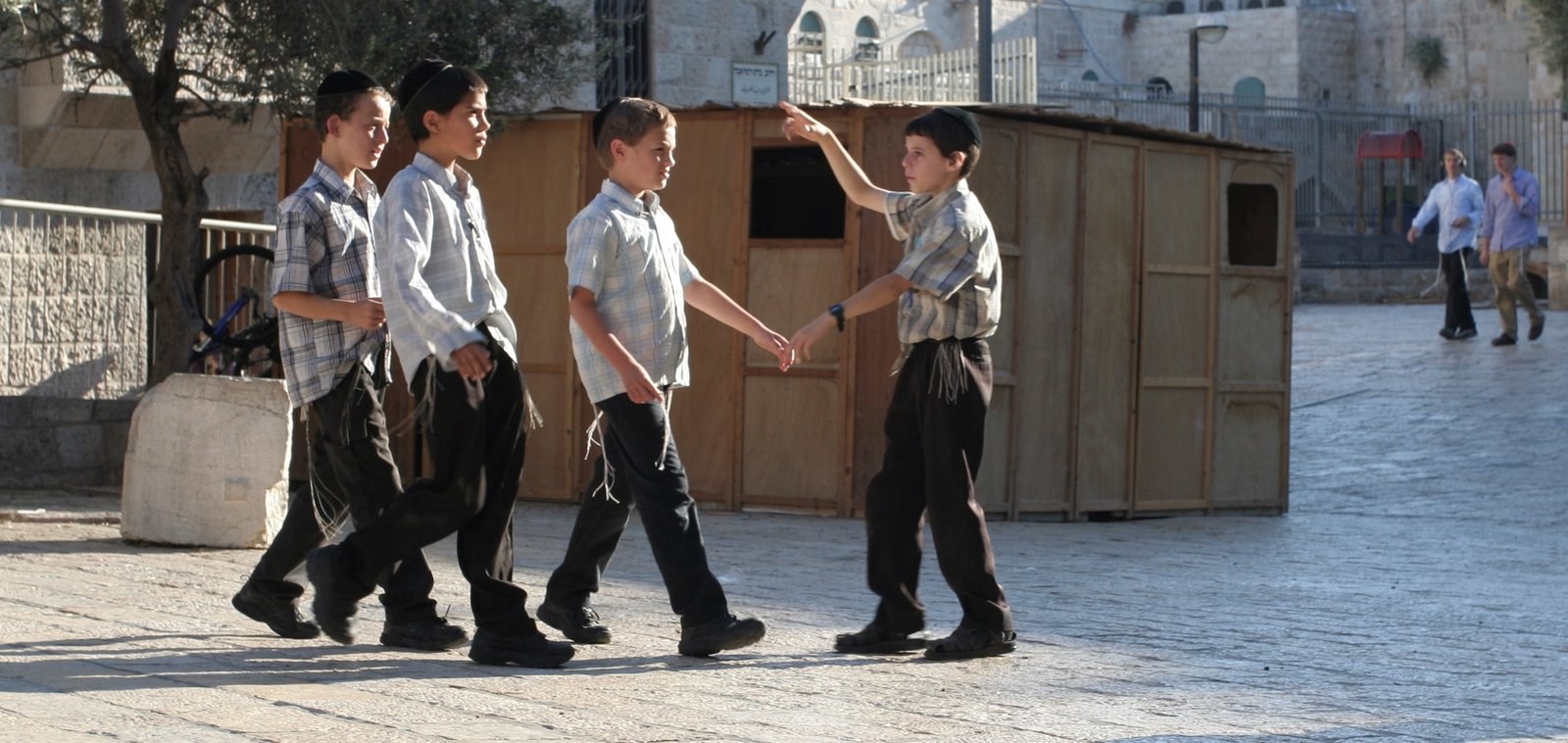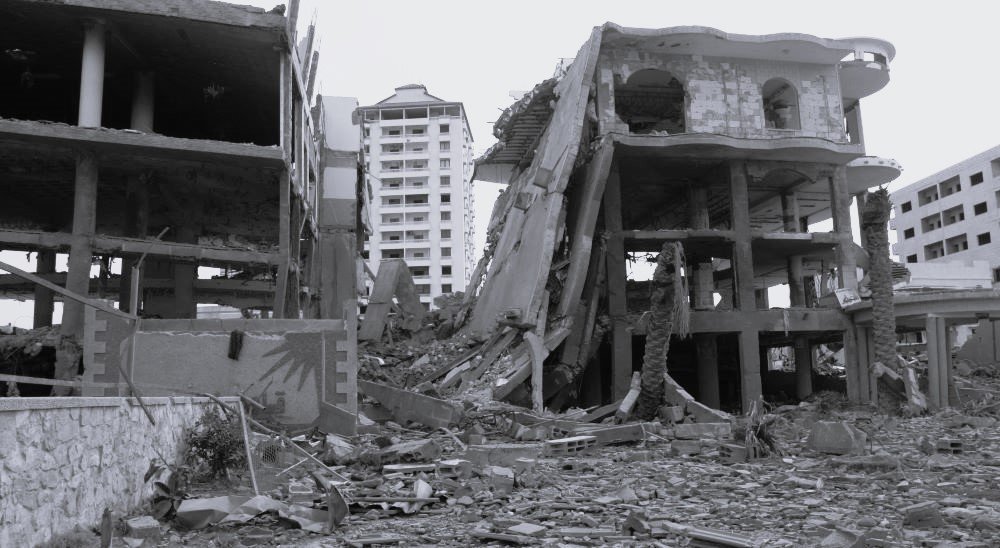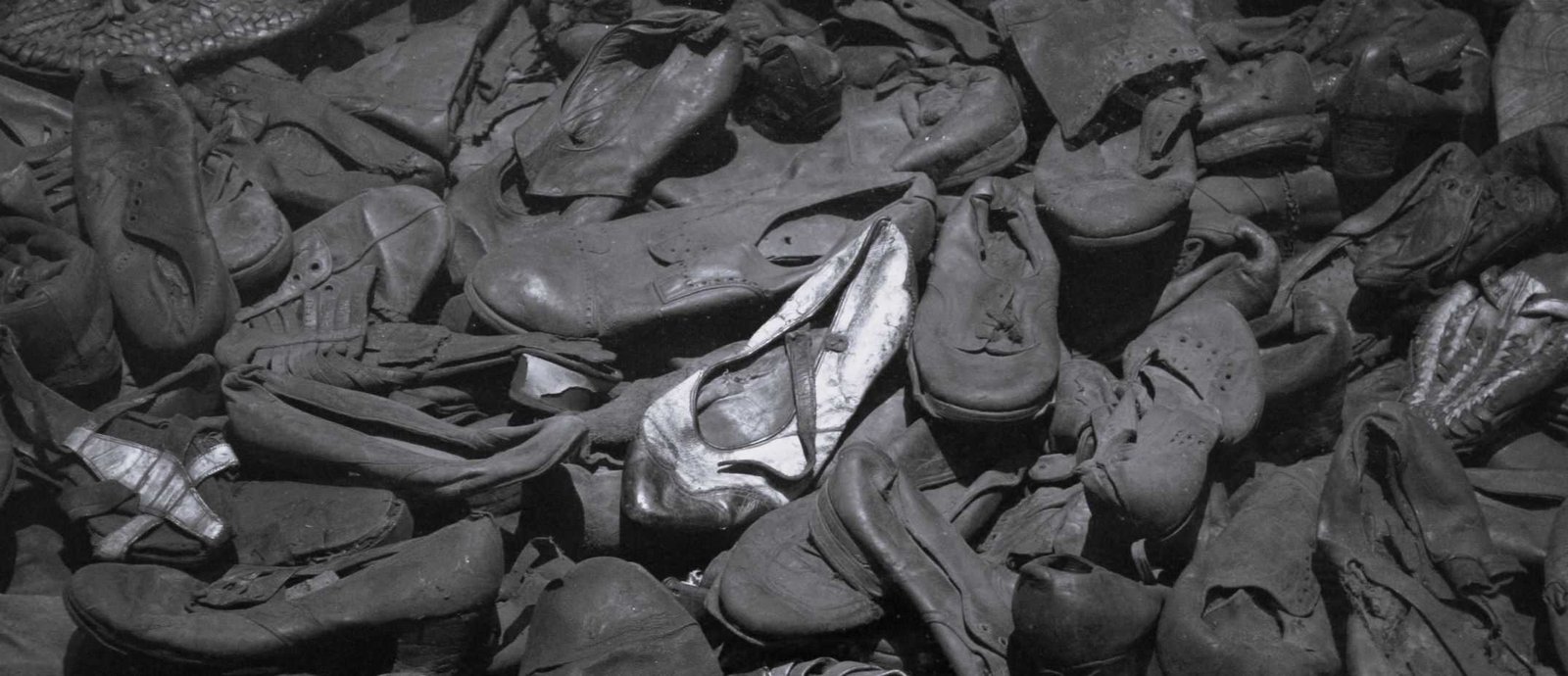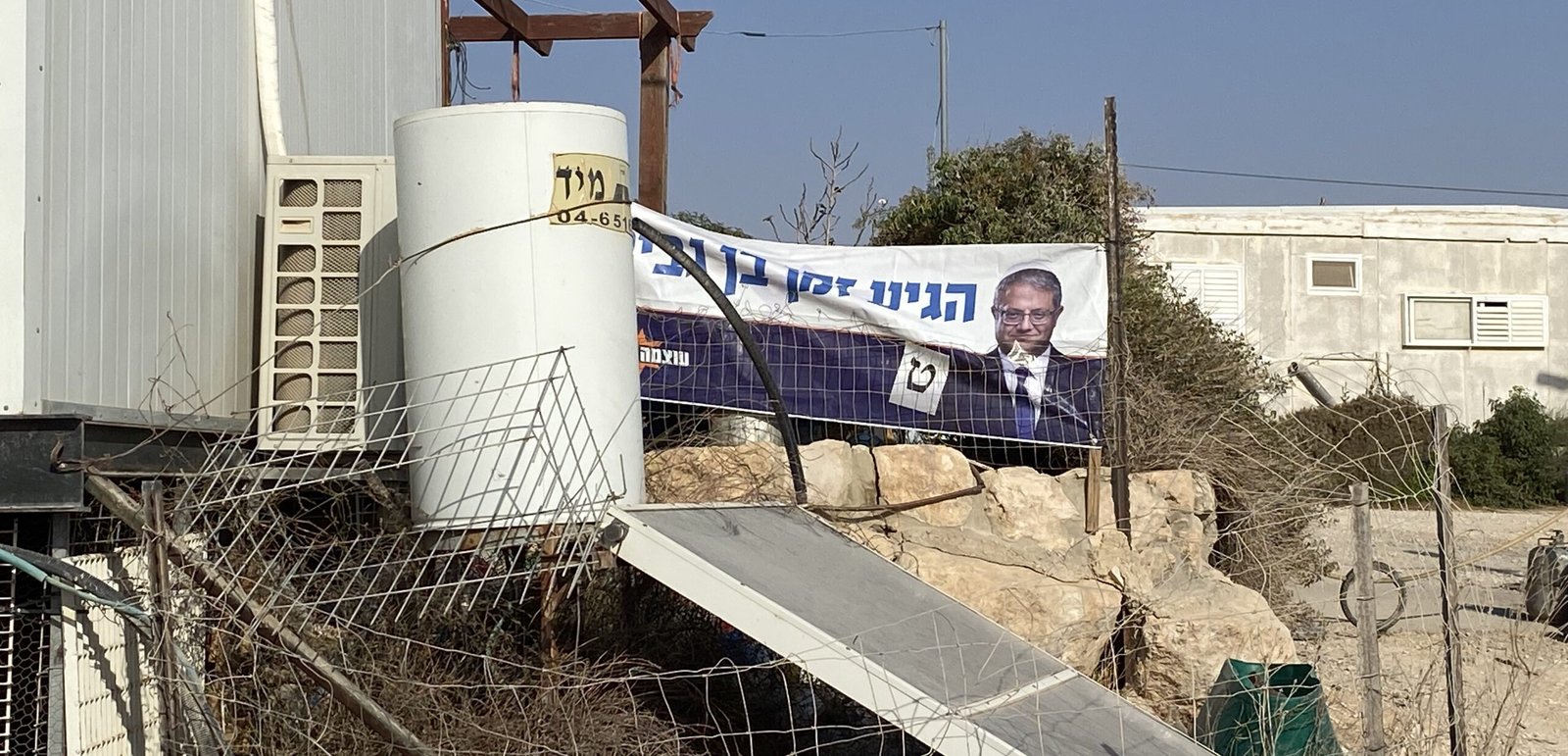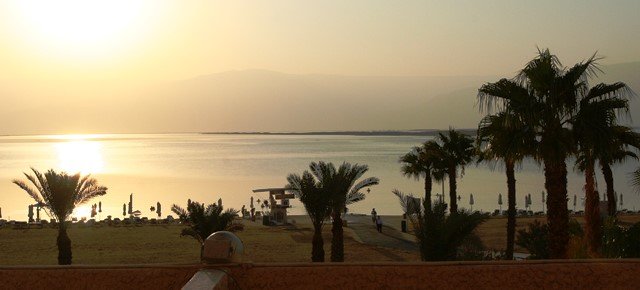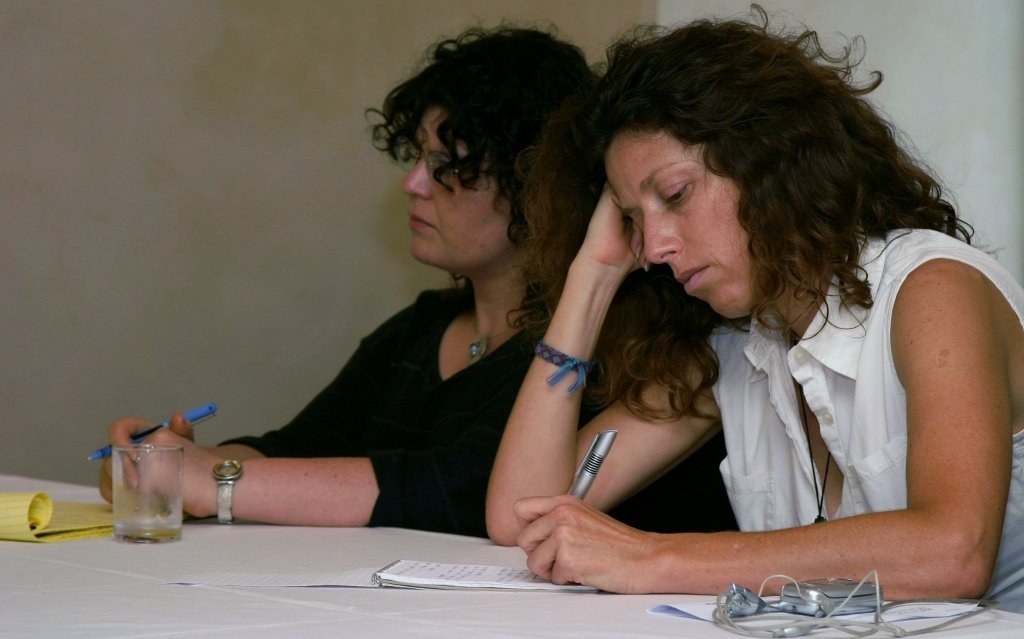Share This Story, Choose Your Platform!
Hanukkah, the feast of the dedicaton of temple in Jerusalem begins on the eve of the 24th of Kislev and continues for eight days. According to our calendar, this festival began this year on the evening of December 10th. Every evening one candle more is lit on the eight-armed lamp stand called Hanukkiah while special blessings and songs commemorate God’s miracles, salvation, wars and the heroism of the Maccabees.
The Hanukkiah stand has a protruding arm for the one candle that serves to lit the others. Instead of candles glass cups filled with olive oil in which a wick is placed may also serve as Hanukkiah. It must be placed in a publicly visible spot, in a window or in front of the entrance hall. The Hanukkiah should be seen by everyone. The Hanukkah liturgy emphazies that it is not permissible to use the candles for a practical purpose, but only “to watch them” in order to thank and glorify God. Hanukkah is also known as the “festival of lights”.
Countless types of Hanukkah lamp stands have been used over time. They were made of stone, wood, ceramic, bronze, brass or silver. Some could be hung on the wall, others stand on four feet and others reminded of the seven-armed menorah in the Temple. The dedication of the Temple has been linked for centuries with a story of a miracle about a small jug of pure oil that did not stop burning for eight days. Pure olive oil was used to light the menorah in the Temple.
From Moses and Aaron to the tribe of Kohath
The story of the Menorah begins at Mount Sinai. There, God issued detailed instructions about what the seven-armed lampstand should look like. The Lord also showed Moses a plan: “And see that you make them after the pattern for them, which is being shown you on the mountain” (Exodus 25:40).
Bezalel, the artist commissioned to make the utensils for the sanctuary, was explicitly appointed by the Lord and filled with the Holy Spirit, “with ability and intelligence, with knowledge and all craftsmanship, to devise artistic designs, to work in gold, silver and bronze, in cutting stones for setting, and in carving wood, for work in every craft” (Exodus 31:3-5). For the instruction of his workers the Lord had also given him the gift of teaching (Exodus 35:34).
Resources for the crafting of the utensils came solely from voluntary gifts. The blessing of God rested with tangible impact on the people of God, who gave so much that Moses was compelled to declare, “‘Let neither man or woman do anything more for the offering for the sanctuary.’ … for the stuff they had was sufficient to do all the work, and more” (Exodus 36:6-7).
The seven-armed lampstand with its accessories, the snuffers and tongs, were made of pure gold. Moses placed it in the tabernacle “opposite the table on the south side of the tabernacle” (Exodus 40:24-25).
Now it was the task of Aaron the High Priest to set the lampstand up in such a way that “the seven lamps shall give light in front of the lampstand” (Numbers 8:2) Levites of the tribe of Kohath (Numbers 3:31) had the task of cleaning and refilling the lamps. “From morning to evening” the Menorah had to burn “before the Lord”, fueled by “pure beaten olive oil” (Exodus 27:20).
From Solomon to Antiochus Epiphanes
When King Solomon built the Temple in Jerusalem, he commissioned ten golden lampstands to be made (1 Kings 7:49), “five on the south side and five on the north, before the inner sanctuary, with flowers, lamps and tongs” (1 Kings 7:49). It is reported that at the consecration, the priests brought the Ark of the Covenant, “the tent of meeting, and all the holy vessels that were in the tent” (1 Kings 8:4). But Bezalel’s Menorah is no longer mentioned from this time onwards.
The priceless treasures in Jerusalem’s Temple gave Israel’s neighbors and their kings sleepless nights. In the 6th century BCE the Babylonian ruler Nebuchadnezzar carried off “all the treasures of the house of the Lord, and the treasures of the King’s house, and cut in pieces all the vessels of gold in the Temple of the Lord, which Solomon king of Israel had made” (2 Kings 24:13). Not only the treasures of the Temple, but the people too were often cut down and carried away, not just because of their material worth, but also because the faith of Israel was a thorn in the flesh for her neighbors.
In the year 169 BCE the Seleucian ruler Antiochus IV Epiphanes plundered the Temple in Jerusalem. He “strode into the sanctuary in rude defiance and had the golden altar removed, plus the lampstand and all the utensils which belonged to it” (1 Maccabees 1:23). His goal was to permeate his whole kingdom with the religion and culture of the Greeks.
For that reason Antiochus abolished the Jewish services and the festivals of Israel. He prohibited circumcision and set up idols and altars on which pigs and other unclean animals were sacrificed – in, among other places, the Temple. “He also ordered the Book of the Law of God to be torn up and burnt, and everyone, with whom the Book of God’s Covenant was found, to be killed, as well as all who kept the Law of God” (1 Maccabees 1:59).
The family of the priest Mattathias
The Jewish historian Flavius Josephus describes in his “Antiquities of the Jews” how the pagan cult was propagated and triggered off the rebellion of the Maccabees. The officers of Antiochus Epiphanes came into the village of Modi’in in order to force its inhabitants to perform sacrifices in compliance with the King’s orders. They demanded “from Mattathias, who stood in high regard on account of his superior learning, that he should begin with the sacrifice. His fellow-citizens were expected to follow his example, and he would gain special favor from the King.”
“Mattathias, however, refused, and declared that even if other families, whether out of fear or seeking favor by conformity, were to follow the instructions of Antiochus, he himself with his sons would never be persuaded to be unfaithful to the God of their fathers.”
“Hardly were these words spoken, when a certain Jew stepped forward and performed the sacrifice as the King had instructed. When Mattathias saw this, he and his sons grabbed their swords, killed the Jew at the altar and cried out, ‘Everyone who is still zealous for the customs of our fathers and the glory of God, follow me!’”
“After that he left everything behind and moved with his sons into the desert, into which many others immediately followed him, and they settled in caves” (Antiquities xii 6:2).
Before Mattathias the priest died, he prayed for his people and instructed his sons, “don’t shrink back from even the most difficult challenges and be willing to sacrifice your lives gladly should it be necessary. But I especially admonish you to remain of one mind with each other. Each one of you must practice his virtues without overlooking the virtues of the others!”
“But choose Maccabaeus on the grounds of his boldness and strength as your leader in battle. For he is the man who will avenge the shame of his people and punish her enemies” (Antiquities xii 7:3).
These words of the patriarch Mattathias hit home. The uprising was successful and under the leadership of Judas Maccabaeus, the Hasmonians were able to drive away their enemies and reconsecrate the Temple. New utensils were crafted, and a new Menorah was set up.
“On the twenty-fifth day of the month of Chaslev (today called ‘Kislev’), which the Macedonians called Apellaios, the lamps on the lampstand were lit again, incense was brought, bread was laid on the table, and sacrifices were performed for the first time on the new altar” (Antiquities xii 8:6).
“Judas celebrated the re-inauguration of sacrifices in the Temple with his fellow-citizens for eight days amidst loud rejoicing. Precious and glorious sacrifices provided the food for the meal, and they worshipped God with songs of praise and Psalms while the people rejoiced.”
“We have continued to celebrate this feast,” writes Josephus, “from that day until today, and we call it the Feast of Lights because, I believe, the unfettered practice of our religion was granted to us unexpectedly, like a beam of light shining on us” (Antiquities xii 8:7).
From Pompeius to the triumphal procession in Rome
The nation’s freedom remained, however, for hardly a century intact. It wasn’t long before the Jews were forced to make compromises with the Roman Imperial Power. Writing about the conquest of Jerusalem by the Roman General Pompeius in the years 64-63 BCE, Josephus reports, “the Temple however, the inner part of which was otherwise inaccessible and to no eye visible, was badly desecrated. For Pompeius penetrated into the inmost sanctuary with a number of his troops and saw what no mortal other than the High Priest is allowed to set eyes upon. Although he stood before the golden table, the holy lamps, the sacrificial bowls, a large amount of incense and moreover about two thousand talents of money in the Temple treasury, he refrained out of a sense of piety from touching any of it – as one could expect from his virtue” (Antiquities xiv 5:4).
In the year 70 CE the Roman General Titus conquered Jerusalem, plundered the city and set the Temple on fire. His father, the Roman Caesar Vespasian, celebrated his victory with a triumphal procession through Rome. This was the occasion when Josephus Flavius reported for the last time about a Menorah:
“The usual heaps of plunder were paraded on display. What stood out most in it all were the things which had been taken from the Temple in Jerusalem: a golden table weighing many talents, and a lampstand, also fashioned in gold, but very different in its appearance to what we’re used to” (De Bello Judaico vii 5:5).
“After the celebrations of the triumph were completed and Vespasian had completely secured the territories of the Roman Empire, he decided to build a special district for the goddess of peace … this is where he brought the consecrated golden utensils of the Jewish sanctuary, of which he was extremely proud” (De Bello Judaico vii 5:7).
In the year 81 CE the so-called “Titus Arch” was built in Rome in honor of the victorious Titus Flavius Vespasianus. On it are engraved among many other things the Temple treasures of Jerusalem, with the seven-armed lampstand.
After the disappearance of the final trace
“Let there be light!” were the first words of God which Scripture has handed down to us. On Mount Sinai the Lord Himself commissioned Moses to make a golden lampstand. Right to the present day, the Menorah is inseparably linked to Israel.
The story of the seven-armed lampstand incorporates the destiny of the Jewish people. It was fashioned and used with love, repeatedly plundered, dragged away, destroyed. Again and again it was restored and cleaned, only to be desecrated again.
The Menorah experienced times of peace and of war. The traces of the historical lampstand end in Rome. But the Menorah continued to accompany the Jewish people as a symbol for almost two thousand years right through the Diaspora, until it was finally taken up into the Coat of Arms of Israel on February 10, 1949.
The wars and struggles have not yet ceased. But, framed by the two olive branches from the vision of the prophet Zachariah, the seven-armed lampstand testifies that “it is not by might or by power, but by my Spirit, says the Lord Zebaoth” (Zechariah 4:6).
(Bible quotes from the Revised Standard Version)
translation by Nicola Vollkommer


